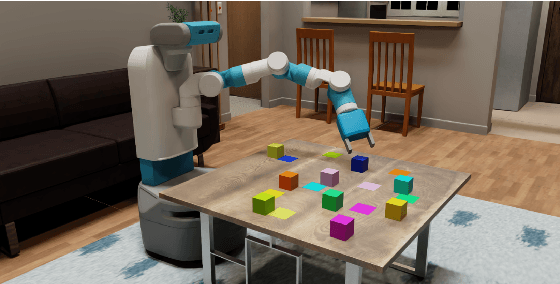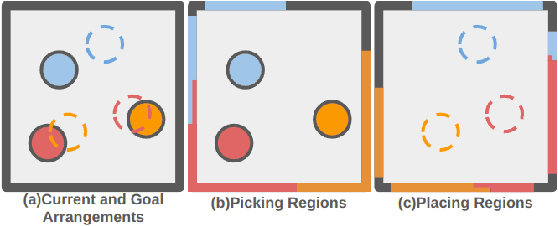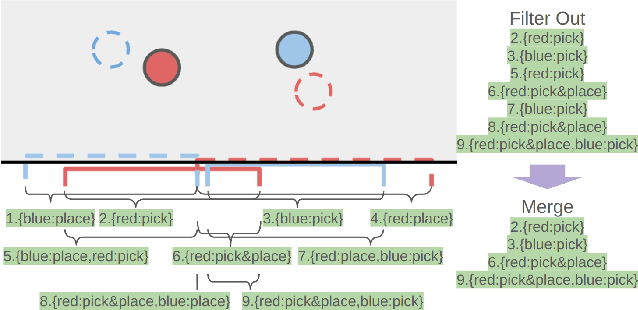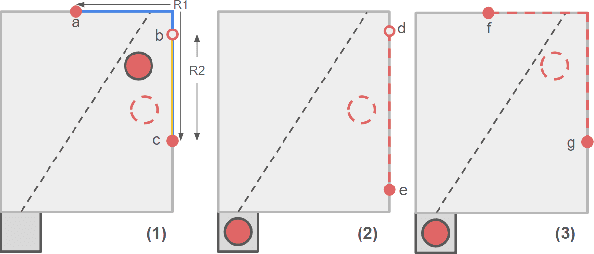Jiawei Wang
TeraSim-World: Worldwide Safety-Critical Data Synthesis for End-to-End Autonomous Driving
Sep 16, 2025Abstract:Safe and scalable deployment of end-to-end (E2E) autonomous driving requires extensive and diverse data, particularly safety-critical events. Existing data are mostly generated from simulators with a significant sim-to-real gap or collected from on-road testing that is costly and unsafe. This paper presents TeraSim-World, an automated pipeline that synthesizes realistic and geographically diverse safety-critical data for E2E autonomous driving at anywhere in the world. Starting from an arbitrary location, TeraSim-World retrieves real-world maps and traffic demand from geospatial data sources. Then, it simulates agent behaviors from naturalistic driving datasets, and orchestrates diverse adversities to create corner cases. Informed by street views of the same location, it achieves photorealistic, geographically grounded sensor rendering via the frontier video generation model Cosmos-Drive. By bridging agent and sensor simulations, TeraSim-World provides a scalable and critical~data synthesis framework for training and evaluation of E2E autonomous driving systems.
Harnessing Uncertainty: Entropy-Modulated Policy Gradients for Long-Horizon LLM Agents
Sep 11, 2025Abstract:In long-horizon tasks, recent agents based on Large Language Models (LLMs) face a significant challenge that sparse, outcome-based rewards make it difficult to assign credit to intermediate steps. Previous methods mainly focus on creating dense reward signals to guide learning, either through traditional reinforcement learning techniques like inverse reinforcement learning or by using Process Reward Models for step-by-step feedback. In this paper, we identify a fundamental problem in the learning dynamics of LLMs: the magnitude of policy gradients is inherently coupled with the entropy, which leads to inefficient small updates for confident correct actions and potentially destabilizes large updates for uncertain ones. To resolve this, we propose Entropy-Modulated Policy Gradients (EMPG), a framework that re-calibrates the learning signal based on step-wise uncertainty and the final task outcome. EMPG amplifies updates for confident correct actions, penalizes confident errors, and attenuates updates from uncertain steps to stabilize exploration. We further introduce a bonus term for future clarity that encourages agents to find more predictable solution paths. Through comprehensive experiments on three challenging agent tasks, WebShop, ALFWorld, and Deep Search, we demonstrate that EMPG achieves substantial performance gains and significantly outperforms strong policy gradient baselines. Project page is at https://empgseed-seed.github.io/
WideSearch: Benchmarking Agentic Broad Info-Seeking
Aug 11, 2025Abstract:From professional research to everyday planning, many tasks are bottlenecked by wide-scale information seeking, which is more repetitive than cognitively complex. With the rapid development of Large Language Models (LLMs), automated search agents powered by LLMs offer a promising solution to liberate humans from this tedious work. However, the capability of these agents to perform such "wide-context" collection reliably and completely remains largely unevaluated due to a lack of suitable benchmarks. To bridge this gap, we introduce WideSearch, a new benchmark engineered to evaluate agent reliability on these large-scale collection tasks. The benchmark features 200 manually curated questions (100 in English, 100 in Chinese) from over 15 diverse domains, grounded in real user queries. Each task requires agents to collect large-scale atomic information, which could be verified one by one objectively, and arrange it into a well-organized output. A rigorous five-stage quality control pipeline ensures the difficulty, completeness, and verifiability of the dataset. We benchmark over 10 state-of-the-art agentic search systems, including single-agent, multi-agent frameworks, and end-to-end commercial systems. Most systems achieve overall success rates near 0\%, with the best performer reaching just 5\%. However, given sufficient time, cross-validation by multiple human testers can achieve a near 100\% success rate. These results demonstrate that present search agents have critical deficiencies in large-scale information seeking, underscoring urgent areas for future research and development in agentic search. Our dataset, evaluation pipeline, and benchmark results have been publicly released at https://widesearch-seed.github.io/
Improving Traffic Signal Data Quality for the Waymo Open Motion Dataset
Jun 08, 2025Abstract:Datasets pertaining to autonomous vehicles (AVs) hold significant promise for a range of research fields, including artificial intelligence (AI), autonomous driving, and transportation engineering. Nonetheless, these datasets often encounter challenges related to the states of traffic signals, such as missing or inaccurate data. Such issues can compromise the reliability of the datasets and adversely affect the performance of models developed using them. This research introduces a fully automated approach designed to tackle these issues by utilizing available vehicle trajectory data alongside knowledge from the transportation domain to effectively impute and rectify traffic signal information within the Waymo Open Motion Dataset (WOMD). The proposed method is robust and flexible, capable of handling diverse intersection geometries and traffic signal configurations in real-world scenarios. Comprehensive validations have been conducted on the entire WOMD, focusing on over 360,000 relevant scenarios involving traffic signals, out of a total of 530,000 real-world driving scenarios. In the original dataset, 71.7% of traffic signal states are either missing or unknown, all of which were successfully imputed by our proposed method. Furthermore, in the absence of ground-truth signal states, the accuracy of our approach is evaluated based on the rate of red-light violations among vehicle trajectories. Results show that our method reduces the estimated red-light running rate from 15.7% in the original data to 2.9%, thereby demonstrating its efficacy in rectifying data inaccuracies. This paper significantly enhances the quality of AV datasets, contributing to the wider AI and AV research communities and benefiting various downstream applications. The code and improved traffic signal data are open-sourced at https://github.com/michigan-traffic-lab/WOMD-Traffic-Signal-Data-Improvement
Empowering Economic Simulation for Massively Multiplayer Online Games through Generative Agent-Based Modeling
Jun 05, 2025Abstract:Within the domain of Massively Multiplayer Online (MMO) economy research, Agent-Based Modeling (ABM) has emerged as a robust tool for analyzing game economics, evolving from rule-based agents to decision-making agents enhanced by reinforcement learning. Nevertheless, existing works encounter significant challenges when attempting to emulate human-like economic activities among agents, particularly regarding agent reliability, sociability, and interpretability. In this study, we take a preliminary step in introducing a novel approach using Large Language Models (LLMs) in MMO economy simulation. Leveraging LLMs' role-playing proficiency, generative capacity, and reasoning aptitude, we design LLM-driven agents with human-like decision-making and adaptability. These agents are equipped with the abilities of role-playing, perception, memory, and reasoning, addressing the aforementioned challenges effectively. Simulation experiments focusing on in-game economic activities demonstrate that LLM-empowered agents can promote emergent phenomena like role specialization and price fluctuations in line with market rules.
CLaSp: In-Context Layer Skip for Self-Speculative Decoding
May 30, 2025Abstract:Speculative decoding (SD) is a promising method for accelerating the decoding process of Large Language Models (LLMs). The efficiency of SD primarily hinges on the consistency between the draft model and the verify model. However, existing drafting approaches typically require additional modules to be trained, which can be challenging to implement and ensure compatibility across various LLMs. In this paper, we propose CLaSp, an in-context layer-skipping strategy for self-speculative decoding. Unlike prior methods, CLaSp does not require additional drafting modules or extra training. Instead, it employs a plug-and-play mechanism by skipping intermediate layers of the verify model to construct a compressed draft model. Specifically, we develop a dynamic programming algorithm that optimizes the layer-skipping process by leveraging the complete hidden states from the last verification stage as an objective. This enables CLaSp to dynamically adjust its layer-skipping strategy after each verification stage, without relying on pre-optimized sets of skipped layers. Experimental results across diverse downstream tasks demonstrate that CLaSp achieves a speedup of 1.3x ~ 1.7x on LLaMA3 series models without altering the original distribution of the generated text.
DoctorAgent-RL: A Multi-Agent Collaborative Reinforcement Learning System for Multi-Turn Clinical Dialogue
May 26, 2025Abstract:Large language models (LLMs) have demonstrated excellent capabilities in the field of biomedical question answering, but their application in real-world clinical consultations still faces core challenges. Existing systems rely on a one-way information transmission mode where patients must fully describe their symptoms in a single round, leading to nonspecific diagnostic recommendations when complaints are vague. Traditional multi-turn dialogue methods based on supervised learning are constrained by static data-driven paradigms, lacking generalizability and struggling to intelligently extract key clinical information. To address these limitations, we propose DoctorAgent-RL, a reinforcement learning (RL)-based multi-agent collaborative framework that models medical consultations as a dynamic decision-making process under uncertainty. The doctor agent continuously optimizes its questioning strategy within the RL framework through multi-turn interactions with the patient agent, dynamically adjusting its information-gathering path based on comprehensive rewards from the Consultation Evaluator. This RL fine-tuning mechanism enables LLMs to autonomously develop interaction strategies aligned with clinical reasoning logic, rather than superficially imitating patterns in existing dialogue data. Notably, we constructed MTMedDialog, the first English multi-turn medical consultation dataset capable of simulating patient interactions. Experiments demonstrate that DoctorAgent-RL outperforms existing models in both multi-turn reasoning capability and final diagnostic performance, demonstrating practical value in assisting clinical consultations. https://github.com/JarvisUSTC/DoctorAgent-RL
Mobile Manipulation Planning for Tabletop Rearrangement
May 24, 2025



Abstract:Efficient tabletop rearrangement planning seeks to find high-quality solutions while minimizing total cost. However, the task is challenging due to object dependencies and limited buffer space for temporary placements. The complexity increases for mobile robots, which must navigate around the table with restricted access. A*-based methods yield high-quality solutions, but struggle to scale as the number of objects increases. Monte Carlo Tree Search (MCTS) has been introduced as an anytime algorithm, but its convergence speed to high-quality solutions remains slow. Previous work~\cite{strap2024} accelerated convergence but required the robot to move to the closest position to the object for each pick and place operation, leading to inefficiencies. To address these limitations, we extend the planner by introducing a more efficient strategy for mobile robots. Instead of selecting the nearest available location for each action, our approach allows multiple operations (e.g., pick-and-place) from a single standing position, reducing unnecessary movement. Additionally, we incorporate state re-exploration to further improve plan quality. Experimental results show that our planner outperforms existing planners both in terms of solution quality and planning time.
M3Depth: Wavelet-Enhanced Depth Estimation on Mars via Mutual Boosting of Dual-Modal Data
May 20, 2025Abstract:Depth estimation plays a great potential role in obstacle avoidance and navigation for further Mars exploration missions. Compared to traditional stereo matching, learning-based stereo depth estimation provides a data-driven approach to infer dense and precise depth maps from stereo image pairs. However, these methods always suffer performance degradation in environments with sparse textures and lacking geometric constraints, such as the unstructured terrain of Mars. To address these challenges, we propose M3Depth, a depth estimation model tailored for Mars rovers. Considering the sparse and smooth texture of Martian terrain, which is primarily composed of low-frequency features, our model incorporates a convolutional kernel based on wavelet transform that effectively captures low-frequency response and expands the receptive field. Additionally, we introduce a consistency loss that explicitly models the complementary relationship between depth map and surface normal map, utilizing the surface normal as a geometric constraint to enhance the accuracy of depth estimation. Besides, a pixel-wise refinement module with mutual boosting mechanism is designed to iteratively refine both depth and surface normal predictions. Experimental results on synthetic Mars datasets with depth annotations show that M3Depth achieves a significant 16% improvement in depth estimation accuracy compared to other state-of-the-art methods in depth estimation. Furthermore, the model demonstrates strong applicability in real-world Martian scenarios, offering a promising solution for future Mars exploration missions.
Seed1.5-VL Technical Report
May 11, 2025Abstract:We present Seed1.5-VL, a vision-language foundation model designed to advance general-purpose multimodal understanding and reasoning. Seed1.5-VL is composed with a 532M-parameter vision encoder and a Mixture-of-Experts (MoE) LLM of 20B active parameters. Despite its relatively compact architecture, it delivers strong performance across a wide spectrum of public VLM benchmarks and internal evaluation suites, achieving the state-of-the-art performance on 38 out of 60 public benchmarks. Moreover, in agent-centric tasks such as GUI control and gameplay, Seed1.5-VL outperforms leading multimodal systems, including OpenAI CUA and Claude 3.7. Beyond visual and video understanding, it also demonstrates strong reasoning abilities, making it particularly effective for multimodal reasoning challenges such as visual puzzles. We believe these capabilities will empower broader applications across diverse tasks. In this report, we mainly provide a comprehensive review of our experiences in building Seed1.5-VL across model design, data construction, and training at various stages, hoping that this report can inspire further research. Seed1.5-VL is now accessible at https://www.volcengine.com/ (Volcano Engine Model ID: doubao-1-5-thinking-vision-pro-250428)
 Add to Chrome
Add to Chrome Add to Firefox
Add to Firefox Add to Edge
Add to Edge